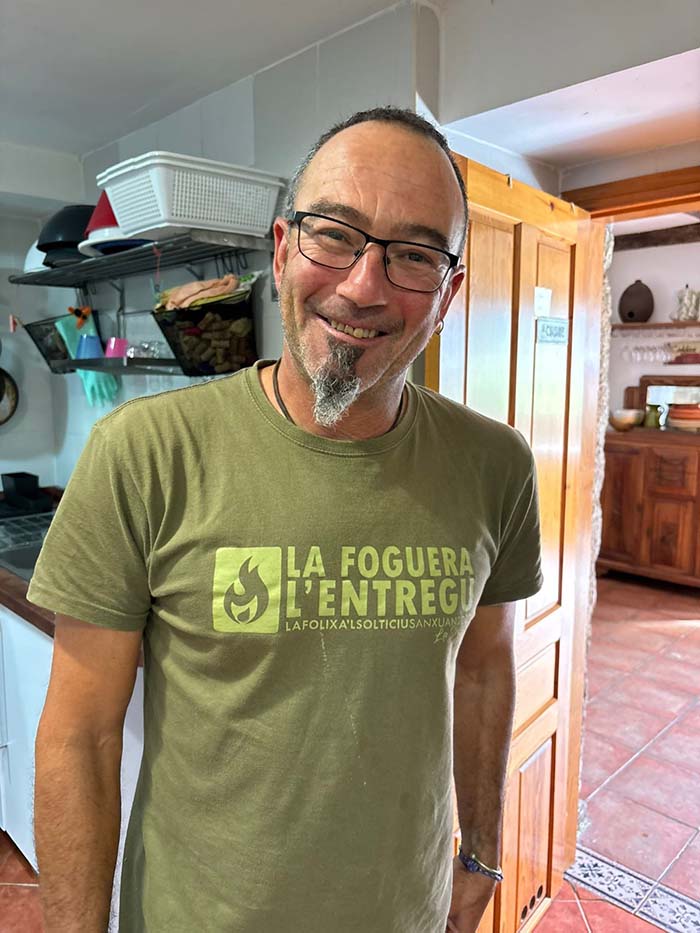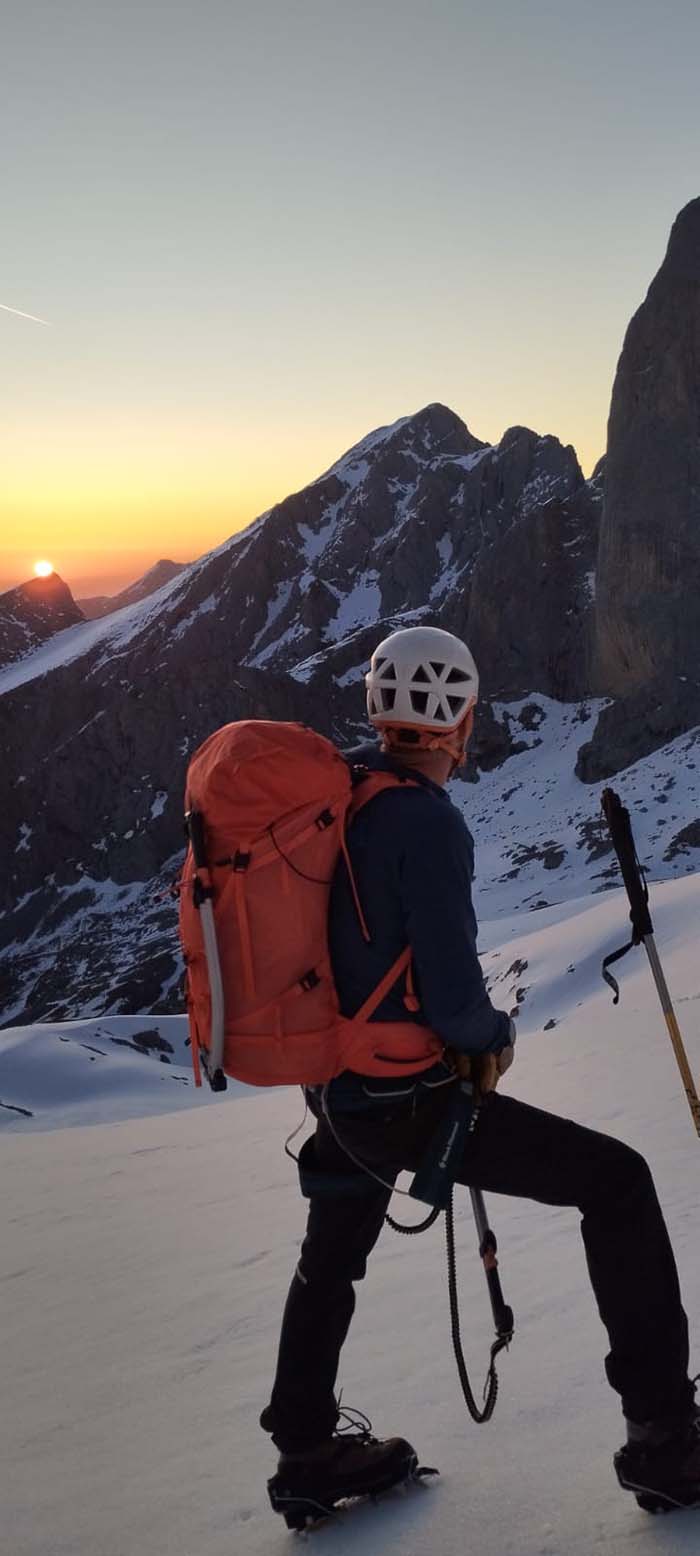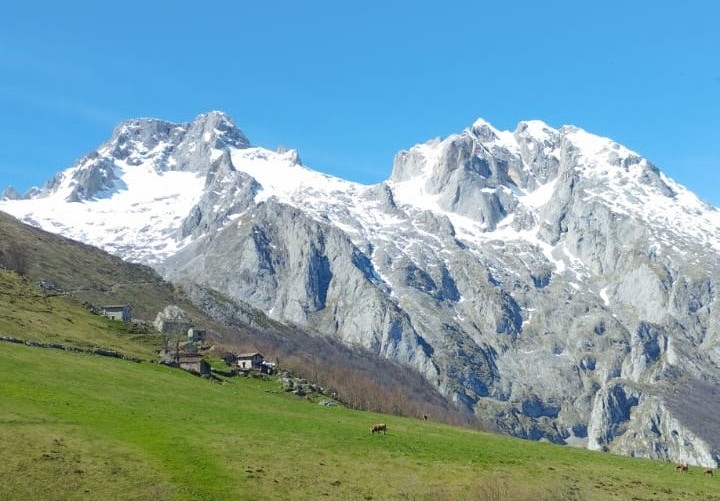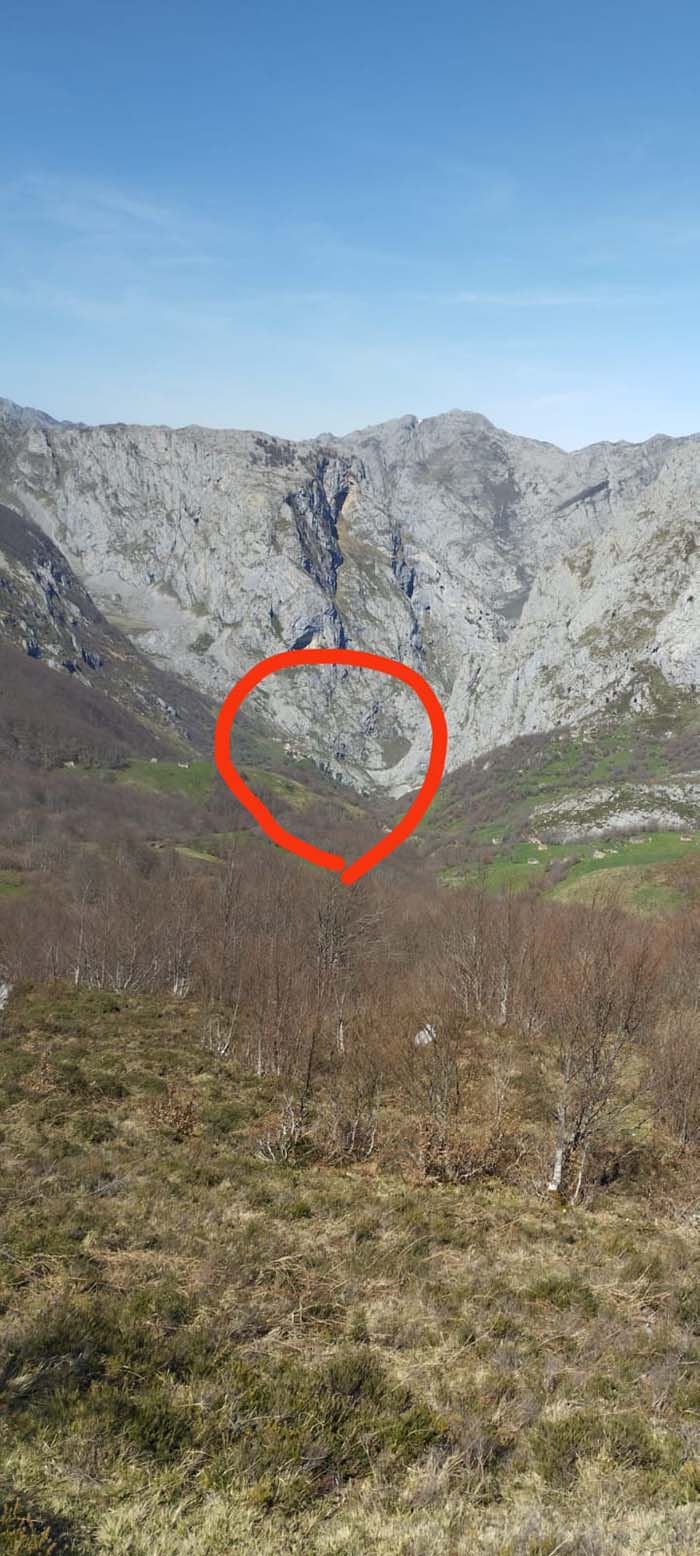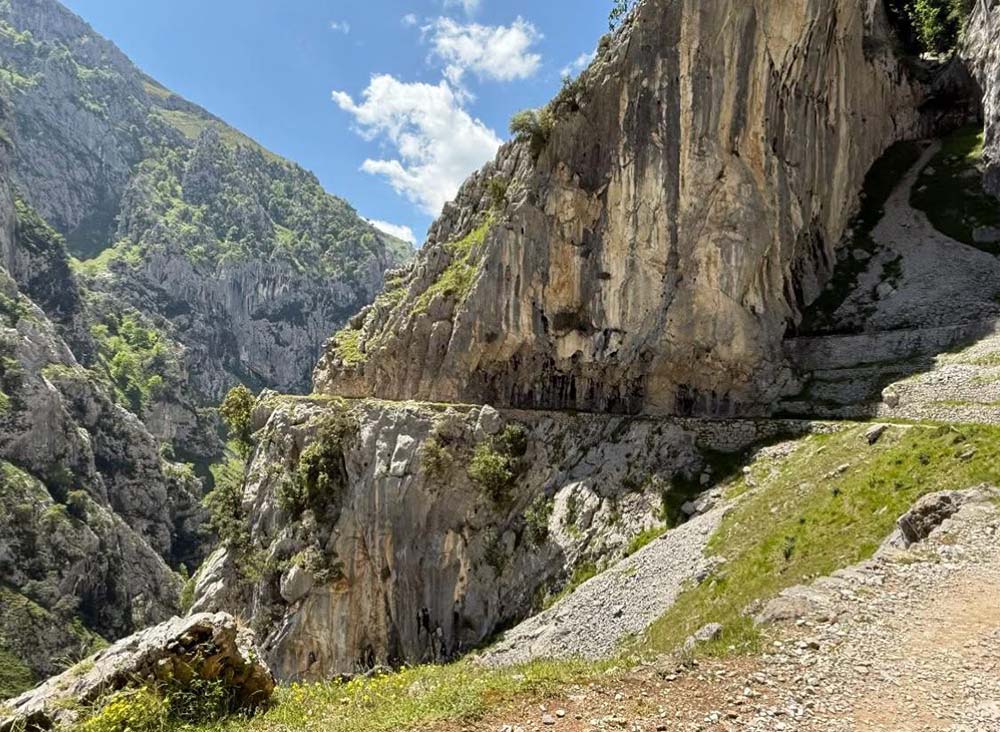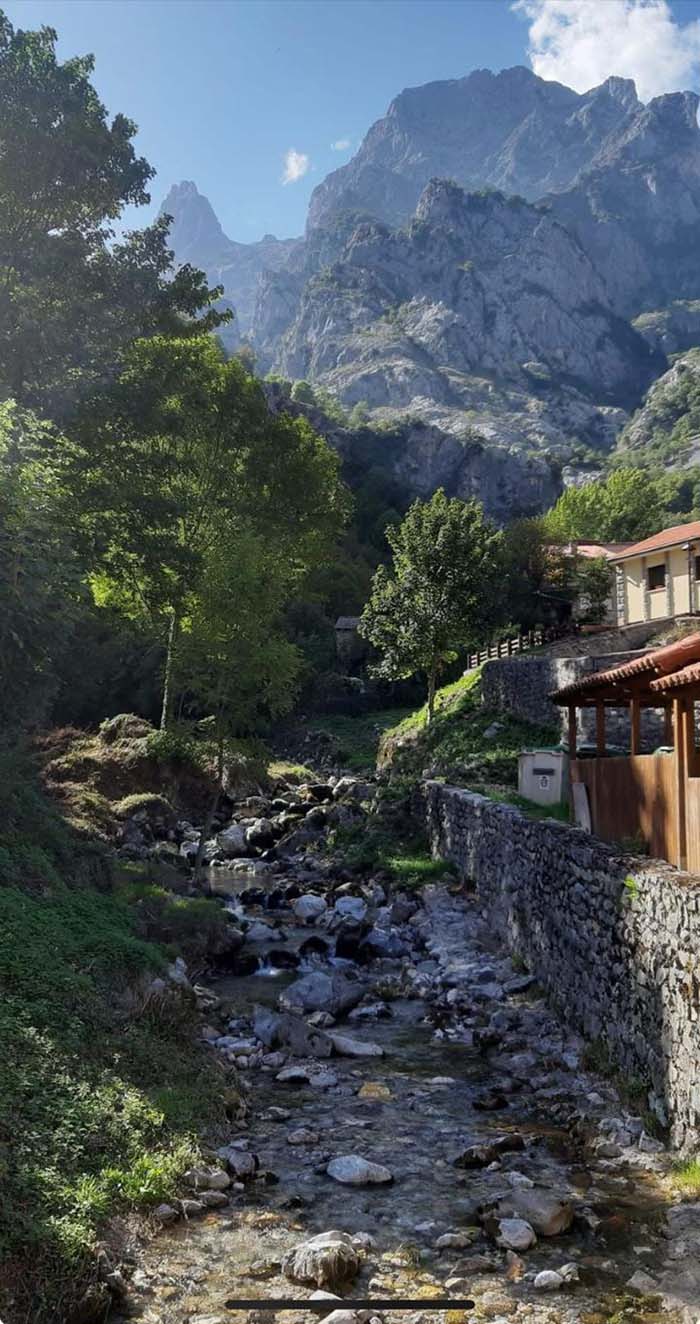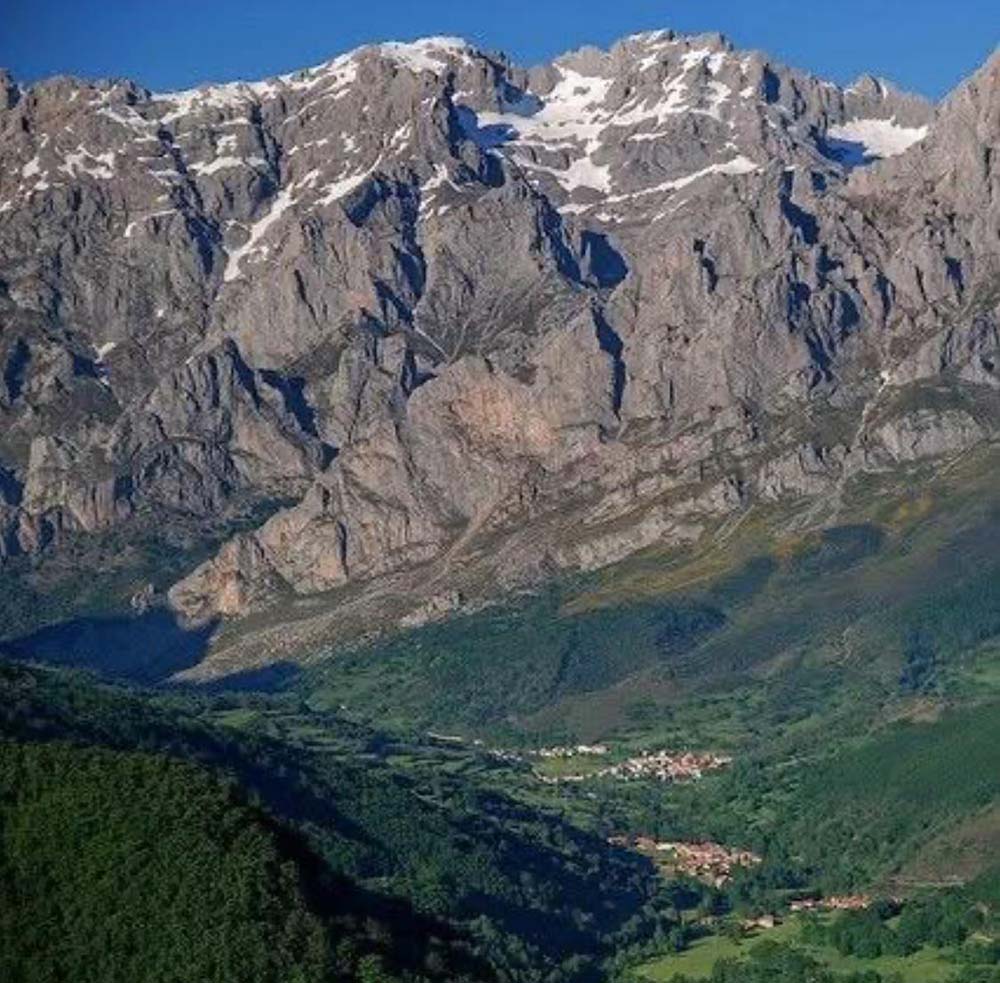
3000 EURO PER PERSON
500 Euro Supplement
“Over the course of 300 million years, the Picos de Europa have been shaped into their current topography. The region’s complex folds and glaciations have created a stunning landscape featuring towering mountains adorned with impressive spires and sharp ridges. Deep, winding gorges are crisscrossed by crystal-clear waters, which lead to lush valleys blanketed with forests and meadows.
What is it about the Picos de Europa that enchants everyone?
Imagine a place where mountains seem to touch the sky, rivers carve out dramatic gorges, and quaint villages look as if they’ve stepped out of a fairy tale. This magical corner of northern Spain has been sculpted by nature for over 300 million years.
Though not particularly large, the park’s proximity to the sea and its unique topography make it one of the most stunning landscapes in the country. Today, it stands as the second most visited national park in Spain and was the first to receive national park status in 1918.
The Picos, affectionately known as “Picos” by those living at their feet, are divided into three massifs: the Western (Cornión), the Eastern (Ándara), and the Central (Urrieles). Our focus will be on the Central massif, the wildest and most alpine, which is home to peaks exceeding 2,600 meters, including Torre Cerredo—the highest peak in the range and the third highest summit on the Iberian Peninsula.
**ABOUT THE TOUR**
A Walking Trip through the Heart of Three Regions
For seven days, we will trek through one of the most spectacular settings in the Iberian Peninsula. This journey will take us across the territories of León, Cantabria, and Asturias, allowing us to explore not only the breathtaking nature but also the rich culture, history, charming villages, and exquisite gastronomy. All this will be enjoyed in comfort, with stays in charming rural hotels, access to a spa, and the guidance of specialized team members who will accompany you every step of the way.”
There are many stories about the origin of its name. Some attribute it to the first navigators who, after crossing the Atlantic, sighted these mountains as the first sign of land in Europe. Others believe that it was the pilgrims of the Camino de Santiago who named them for their resemblance to the Alps upon seeing these peaks. Either way, one thing is clear: the Picos leave a lasting impression.
However, it’s not just about the cliffs and rugged wilderness. This trip also offers an opportunity to connect with the vibrant life that flourishes in these mountains. We will explore villages that seem suspended in time, learn about traditions that are still alive, and indulge in authentic, delicious cuisine. This journey is not merely a hiking adventure; it is a complete sensory experience.
Itinerary
Day 1: Leon – Posada de Valdeon
Welcome to your first hike in the heart of the Picos de Europa!
Mario will meet you at 9:00 AM at the main bus station in León. Our adventure begins in the city of León, from where we will embark on a scenic road trip that takes just over two hours, traveling from the Castilian plateau to the breathtaking Cantabrian Mountains. Our destination is Posada de Valdeón, a picturesque village nestled in a stunning valley and one of the most beautiful gateways to the Central Massif of the Picos de Europa.
Before we arrive, we will lace up our hiking boots to enjoy a special route: Las Fuentes del Cares, the source of the park’s most iconic river. This walk will provide a wonderful introduction to the geography, vegetation, and essence of these majestic mountains. Prepare to be amazed by the sheer power of water as it carves through the landscape.
The route begins at the Puerto de Panderrueda, a natural viewpoint overlooking the Valdeón Valley. From there, we will gently ascend through centuries-old oak trees until we reach the base of Pico Gildar, where a beautiful waterfall showcases the strength of the young Cares River.
On our way back, we will complete a circular route to explore the early evidence of pastoral life in the mountains, including cabins, high pastures, and ancient communication paths that have connected these villages to the outside world for centuries.
📏 Distance: 12 km ⛰️ Elevation gain: +500 m / -500 m
Day 2: Posada de Valdeon – Espinama
Ascent Among Giants and Descent Through Beech Forests
Today marks the beginning of our true mountain adventure. We will leave Posada de Valdeón to tackle one of the most challenging stages of the tour, primarily due to the significant elevation gain rather than technical difficulty. Our route will take us up the slopes surrounding the majestic Torre del Friero and Torre de Salinas, offering breathtaking scenery all around.
We will reach the Cabén de Remoña, at an elevation of 1,780 meters, which is the highest point of our journey. From there, we will enter the Cantabrian region and descend spectacularly through beech forests and lush meadows until we arrive in Espinama, a charming village nestled in the mountains.
During this stage, part of our path coincides with the ancient Vadiniense route, which connects the Camino del Norte with the Camino Francés, crossing through the Picos de Europa.
📏 Distance:** 16 km Elevation Gain:** +1,000 m / -1,000 m
Looking for an easier option? We can start at a higher point, either from Santa Marina de Valdeón or even from Puerto de Pandetrave.
Day 3: Espinama – Sotres
hrough the Áliva Valley: Pastures, Peaks, and Endless Beauty**
Today’s stage is more manageable and takes place in a wide and picturesque environment: the glacial valley of Áliva, one of the most expansive and breathtaking landscapes in the Picos de Europa. We will walk through endless meadows, following an old mining track that is now used by Cantabrian and Asturian shepherds to access their flocks.
The route follows the course of the Duje River, which serves as a natural border between the Central and Eastern massifs. Surrounding us are peaks with their own names and rich histories: Peña Vieja, Picu Pozán, Cortes, Escamelláu, and Morra de Lechugales.
After a day of pure visual enjoyment, we will arrive in Sotres, one of the highest villages in Asturias, where a good dinner and a well-deserved rest await us.
📏 Distance: 16 km ⛰️ Elevation Gain: +750 m / -600 m
Day 4: Sotres Tresvso – La Hermida
A spectacular descent and a relaxing end.
Today’s stage is shorter but filled with intense sensations. We begin in the picturesque and remote village of Tresviso, renowned for its Denomination of Origin blue cheese. From there, we descend along an old, stunning path into the La Hermida gorge, an impressive canyon that marks the entrance to the Picos from Cantabria.
This historic route has served as the only means of communication between Tresviso and the outside world for centuries. Carved into the rock, it was originally created for transporting zinc ore on horseback.
We conclude the day on a high note, resting at the Hotel Balneario de La Hermida, where we can indulge in its thermal waters and relax like royalty.
📏 Distance: 8 km ⛰️ Elevation gain: -800 m
Day 5: Poncebos – Bulnes – Poncebos
Nature, tradition and flavor on an active rest day.
From our comfortable hotel, we’ll drive along the Hermida Gorge, following the waters of the Deva River through Cantabrian lands until we reach the Asturian province again at Panes, the point where the Cares River (which we met on the first day) and the Deva flow together toward the sea.
From here, we’ll continue our circuit around the Picos, ascending alongside the Cares through another stunning gorge until we arrive at Arenas de Cabrales and Poncebos, the main gateway to the Central Massif of the Picos de Europa.
Today’s hike leads us to one of the most beautiful villages in the park, famous for being the last one with no road access. The only alternative to this ancient path is a cogwheel train (built relatively recently) that travels through the heart of Peña Maín.
The trail to the village of Bulnes runs through the gorge, locally called the “Canal del Texu”. This beautiful path winds its way between the rocks, gaining elevation until it reaches the village. Until 2001, when the cogwheel train was inaugurated, this was the only way in or out. Everything was carried up and down through this ravine.
We’ll have lunch in the village, either at a restaurant or picnic-style, before retracing our steps back to the starting point. It’s worth noting that taking the cogwheel train down is always an option.
The rest of the day will be spent visiting and participating in an ethnographic route in the beautiful village of Asiegu (perhaps the best viewpoint of the Picos de Europa). Here we’ll take part in the “Cheese and Cider Route”, a peaceful walk during which we’ll uncover the secrets of two essential products in Asturian cuisine, culture, and tradition. A true delight for the senses.
📏 Distance: 8 km (round trip) ⛰️ Elevation Gain/Loss: +500 m / -500 m
Day 6: Poncebos – Cain (Senda del Cares)
Today, we embark on one of the most spectacular and well-known hiking routes in Europe: the Senda del Cares. This remarkable trail is a natural wonder that winds through a gorge carved into the rock along the Cares River. Along the way, we will encounter hand-dug tunnels, hanging bridges, sheer vertical walls, and breathtaking views that enhance our experience throughout the day.
This path was created in the 1940s, utilizing an old water channel originally built for a hydroelectric plant. It represents an incredible feat of engineering, now offering us a unique opportunity to explore the stunning landscape.
We will conclude our hike in the village of Caín, where tourism and pastoral life coexist harmoniously. After taking in the sights, we will return by van to Posada de Valdeón.
📏 Distance: 13 km, Elevation Gain: +450 m / -100 m
Day 7: Posada de Valdeon-Leon
Farewell among mountains and history
Just as we did on the first day with a small introductory route to the mountains of Picos de Europa, we don’t want to leave without one last walk. It will be a gentle farewell, and for this, on the way back to León, we will make a small stop on the slopes of the southern side of the Cantabrian Mountains to walk a small section of the Camino Vadiniense that we already touched at some point during our tour. Remember that this path connects the Camino del Norte with the Camino Francés.
Route: Stage 6 Camino Vadiniense, from Barniedo de la Reina to Riaño
A beautiful way to say “until next time” to the mountains of northern Spain, we will continue surrounded by these limestone masses, walking a path full of history and ending in Riaño, a quintessential mountain village with a sad history behind it, as the original village is now submerged under the waters of the enormous reservoir that today delights many travelers and whose margins are known as the “Leonese fjords,” but which brought great misfortune to many families who in the 80s saw their homes and ways of life submerged under the waters.
A well-deserved refreshment in one of Riaño’s bars, and if we have enough time, a good meal of some of the area’s specialties, will put an end to our mountain journey. One more hour of travel and we will be back in León where we will say goodbye to our companions and guides.
📏 Distance: 12 km ⛰️ Elevation gain: Imperceptible
* Please note that this itinerary may change slightly due to accommodation availability, weather conditions, festivals, or spontaneous side trips.
** Reminder: There will be NO van support for this walk.
*** This is not an endurance race or competition. Please be respectful of the different paces and walks of life that come together on this group trip.
Location
FAQs
How many miles do we hike per day?
We average between 7-10 miles per day or 15-20 kilometers. Most pilgrims walking the trail independently walk 15 miles or 25 kilometers a day carrying a heavy pack.
What kind of hotels do we use?
We use beautifully restored farmhouses known as Casa Rurales, and family run Pazos, Galician manor home and hotels. Most are located a little off route from the Camino de Santiago, situated in small towns and villages, away from the large cities, so most day will involve a group transfer at the beginning and end of the day. We try to stay two nights in our hotels. All rooms have private bathrooms. The smaller inns have no phone or TV in the room.
Is there WIFI at our hotels?
Our hotels nearly always have free WIFI available although it is often just in the lobby/public areas. We generally stay at historical hotels, which often have thick walls, so WIFI rarely works in the rooms. Most bars and cafes enroute have free WIFI also.
How many meals are included?
All breakfasts are included in the price of this tour. Breakfast in Spain tends to be very light. We will do our best to accommodate any dietary requirements. Please let us know in advance as much as possible. You are responsible for your own lunch; you can eat at one of the many cafes that cater to pilgrims or purchase sandwich items and fruit locally. Five dinners are included. Our hotels will be happy to provide a vegetarian option should it be required. On the nights when dinners are not included, your guides will recommend places for you to eat. The van will be stocked with healthy snacks and water.
How does one get to/from LEON?
- Fly into Madrid, then take the bus or train to Leon. www.renfe.es or www.alsa.es
What kind of equipment should I pack?
The hikes are not fancy. I will supply you with an equipment list of basic items to pack. You are limited to one bag weighing 30-lbs and a one-day pack to hold items such as your camera, rain gear and water bottle. Hiking/trail shoes or lightweight hiking boots will be your most important pieces of equipment. Please be sure they are well broken in and that you have proper socks before arriving in Spain. Some of our hotels have outdoor swimming pools (not always open) so bring a bathing suit if you would like to swim.
How do I access spending money/how much should I bring?
Most people travel with an ATM card. Money machines are everywhere in Spain but be sure you know your PIN number before departing the US. Do not bring traveler’s checks (most banks will turn you away.) Most expenses are already built into Spanish Steps trips. Lunches will be a separate expense. The Menu del Dia or Menu del Peregrino is available at local cafes and will cost between 9-12 Euros. There are three course meals with wind and water included – a great value.
Should I leave a gratuity for our guides?
This is a very common question my clients ask–As a person working hard in the service industry to please the traveler, a gratuity is much appreciated by the staff members at the end of the tour. As a general guideline, people tip around 10 Euros per day, per guide. For trips where we have a bus driver, a gratuity of around 15 Euros per person at the end of the trip would be appreciated.
What is the average age of the group?
The average age of the hiker on a Spanish Steps tour is 50 years old during the spring and fall months but younger during the summer months. Most trips are a mix of a 40/60 ratio of men to women. I have taken school groups where the age range is 13- 20 years old. With an eager heart and a mind full of curiosities, a healthy person of any age is able to walk the Camino. Pilgrims of all ages are welcome of course!
Is there a single supplement?
Some people would like to be matched with a roommate. I can’t guarantee a match but will try to place you with someone if there are any requests. The price of the single supplement is 500 EUROS per person for this seven-day trip.
Can you provide references?
We would be delighted to share with you some references from former clients who have walked with us. If you would like to contact any former Spanish Steps participants, let us know by calling us. Check out our Customer Comments on our website at www.spanishsteps.com.

